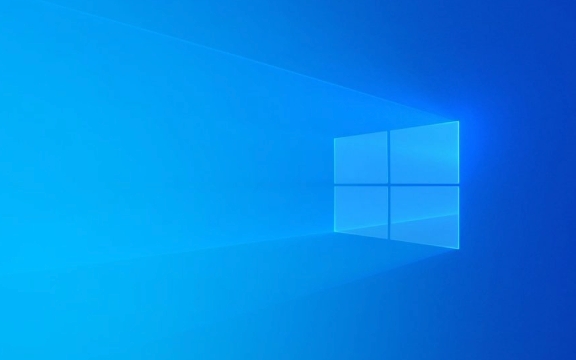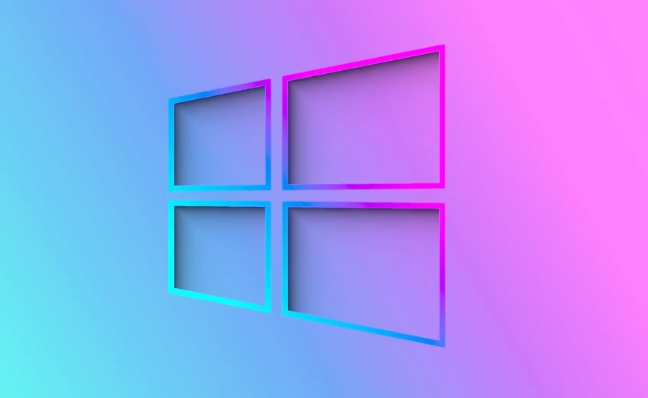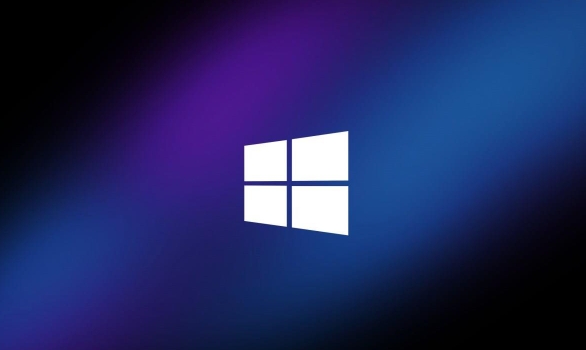 System Tutorial
System Tutorial
 Windows Series
Windows Series
 Why am I getting low FPS after a Windows update, and how to fix it?
Why am I getting low FPS after a Windows update, and how to fix it?
If you experience low FPS after a Windows update, check graphics drivers, adjust visual effects, manage background processes, and verify game-specific settings. 1. Update or roll back your GPU driver via Device Manager or the manufacturer’s website. 2. Adjust Windows visual effects for best performance by disabling animations and transparency. 3. Use Task Manager to identify and end resource-heavy background processes like Windows Search or telemetry services, and set power plan to High Performance. 4. Check for game compatibility issues, reinstall or verify game files, ensure the game is patched, and confirm display mode settings are optimal. These steps typically resolve performance drops caused by Windows updates.

If you've recently updated Windows and suddenly noticed your games or apps are running slower — like your frame rates dropped out of nowhere — you're not alone. Windows updates can sometimes mess with drivers, system settings, or even background processes that affect performance. The good news is, there are several things you can do to get your FPS back up.

Check for Graphics Driver Issues
One of the most common reasons for low FPS after a Windows update is outdated or incompatible graphics drivers. Sometimes, an update might roll back your driver or install a version that doesn't play well with your GPU.
Here's what you can try:

- Go to Device Manager, expand Display adapters, right-click your GPU, and choose Update driver.
- Alternatively, go directly to your GPU manufacturer’s website (NVIDIA, AMD, or Intel) and download the latest driver manually.
- If you had a working driver before the update, you can also roll it back by going to the same menu and selecting Properties > Driver > Roll Back Driver (if available).
This step often fixes sudden performance drops because drivers are crucial for how your system talks to the GPU.
Adjust Windows Visual Effects for Performance
Windows sometimes enables more visual effects after an update, especially if it's a major one like a feature upgrade. These effects can take up resources that could otherwise be used for gaming or rendering.

To tweak this:
- Open System Properties (you can search for it in the Start menu).
- Under the Advanced tab, click Settings under Performance.
- Choose Adjust for best performance, or manually uncheck animations and transparency effects that you don’t need.
You might not notice a huge difference in games, but some apps and games can benefit from a leaner visual setup, especially on lower-end systems.
Stop Background Processes from Hogging Resources
After a Windows update, background tasks like indexing or telemetry services may kick in, eating up CPU, RAM, or disk usage. That can definitely impact FPS, particularly in less powerful machines.
What to do:
- Press
Ctrl Shift Escto open Task Manager. - Check the CPU, Memory, Disk, and Background processes tabs to spot any unusual activity.
- If something like Windows Search, Windows Update, or Cloud Experience Host is using a lot of resources, right-click and End task (but avoid killing critical system processes unless you know what they do).
Also, make sure to set high-performance mode:
- Go to Control Panel > Power Options and select High performance (or adjust the current plan to maximize performance).
Watch Out for Game-Specific Settings or Conflicts
Sometimes the issue isn’t system-wide — just certain games suffer from low FPS after a Windows update. This can happen due to compatibility issues or changes in how DirectX or Vulkan works post-update.
Try these:
- Launch the game through its launcher or Steam, and check if there’s a compatibility warning.
- Reinstall or verify the game files via Steam or Epic Launcher.
- Make sure the game has the latest patch — developers often release hotfixes after major OS updates.
Also, check if your game is running in the correct display mode (fullscreen vs. borderless) — sometimes updates reset those preferences, leading to unexpected performance hits.
Basically, when you’re hit with low FPS after a Windows update, start with drivers, then look at background processes and visual settings. Most of the time, it’s not a deep-rooted problem — just something that got shifted around during the update. Fixing one or two of these areas usually gets things back to normal.
The above is the detailed content of Why am I getting low FPS after a Windows update, and how to fix it?. For more information, please follow other related articles on the PHP Chinese website!

Hot AI Tools

Undress AI Tool
Undress images for free

Undresser.AI Undress
AI-powered app for creating realistic nude photos

AI Clothes Remover
Online AI tool for removing clothes from photos.

Clothoff.io
AI clothes remover

Video Face Swap
Swap faces in any video effortlessly with our completely free AI face swap tool!

Hot Article

Hot Tools

Notepad++7.3.1
Easy-to-use and free code editor

SublimeText3 Chinese version
Chinese version, very easy to use

Zend Studio 13.0.1
Powerful PHP integrated development environment

Dreamweaver CS6
Visual web development tools

SublimeText3 Mac version
God-level code editing software (SublimeText3)
 How to Change Font Color on Desktop Icons (Windows 11)
Jul 07, 2025 pm 12:07 PM
How to Change Font Color on Desktop Icons (Windows 11)
Jul 07, 2025 pm 12:07 PM
If you're having trouble reading your desktop icons' text or simply want to personalize your desktop look, you may be looking for a way to change the font color on desktop icons in Windows 11. Unfortunately, Windows 11 doesn't offer an easy built-in
 Fixed Windows 11 Google Chrome not opening
Jul 08, 2025 pm 02:36 PM
Fixed Windows 11 Google Chrome not opening
Jul 08, 2025 pm 02:36 PM
Fixed Windows 11 Google Chrome not opening Google Chrome is the most popular browser right now, but even it sometimes requires help to open on Windows. Then follow the on-screen instructions to complete the process. After completing the above steps, launch Google Chrome again to see if it works properly now. 5. Delete Chrome User Profile If you are still having problems, it may be time to delete Chrome User Profile. This will delete all your personal information, so be sure to back up all relevant data. Typically, you delete the Chrome user profile through the browser itself. But given that you can't open it, here's another way: Turn on Windo
 How to fix second monitor not detected in Windows?
Jul 12, 2025 am 02:27 AM
How to fix second monitor not detected in Windows?
Jul 12, 2025 am 02:27 AM
When Windows cannot detect a second monitor, first check whether the physical connection is normal, including power supply, cable plug-in and interface compatibility, and try to replace the cable or adapter; secondly, update or reinstall the graphics card driver through the Device Manager, and roll back the driver version if necessary; then manually click "Detection" in the display settings to identify the monitor to confirm whether it is correctly identified by the system; finally check whether the monitor input source is switched to the corresponding interface, and confirm whether the graphics card output port connected to the cable is correct. Following the above steps to check in turn, most dual-screen recognition problems can usually be solved.
 Want to Build an Everyday Work Desktop? Get a Mini PC Instead
Jul 08, 2025 am 06:03 AM
Want to Build an Everyday Work Desktop? Get a Mini PC Instead
Jul 08, 2025 am 06:03 AM
Mini PCs have undergone
 Fixed the failure to upload files in Windows Google Chrome
Jul 08, 2025 pm 02:33 PM
Fixed the failure to upload files in Windows Google Chrome
Jul 08, 2025 pm 02:33 PM
Have problems uploading files in Google Chrome? This may be annoying, right? Whether you are attaching documents to emails, sharing images on social media, or submitting important files for work or school, a smooth file upload process is crucial. So, it can be frustrating if your file uploads continue to fail in Chrome on Windows PC. If you're not ready to give up your favorite browser, here are some tips for fixes that can't upload files on Windows Google Chrome 1. Start with Universal Repair Before we learn about any advanced troubleshooting tips, it's best to try some of the basic solutions mentioned below. Troubleshooting Internet connection issues: Internet connection
 How to clear the print queue in Windows?
Jul 11, 2025 am 02:19 AM
How to clear the print queue in Windows?
Jul 11, 2025 am 02:19 AM
When encountering the problem of printing task stuck, clearing the print queue and restarting the PrintSpooler service is an effective solution. First, open the "Device and Printer" interface to find the corresponding printer, right-click the task and select "Cancel" to clear a single task, or click "Cancel all documents" to clear the queue at one time; if the queue is inaccessible, press Win R to enter services.msc to open the service list, find "PrintSpooler" and stop it before starting the service. If necessary, you can manually delete the residual files under the C:\Windows\System32\spool\PRINTERS path to completely solve the problem.
 How to show file extensions in Windows 11 File Explorer?
Jul 08, 2025 am 02:40 AM
How to show file extensions in Windows 11 File Explorer?
Jul 08, 2025 am 02:40 AM
To display file extensions in Windows 11 File Explorer, you can follow the following steps: 1. Open any folder; 2. Click the "View" tab in the top menu bar; 3. Click the "Options" button in the upper right corner; 4. Switch to the "View" tab; 5. Uncheck "Hide extensions for known file types"; 6. Click "OK" to save settings. This setting helps identify file types, improve development efficiency, and troubleshoot problems. If you just want to view the extension temporarily, you can right-click the file and select "Rename" and press the Esc key to exit, and the system settings will not be changed.






